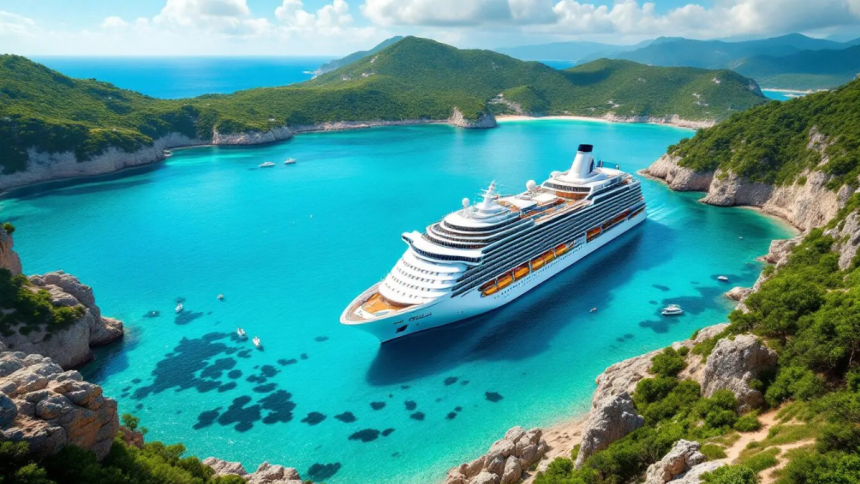The Blue Planet Meets Green Choices
The first time you see the turquoise shimmer of the Caribbean Sea, it feels almost impossible that tourism could hurt it. Yet marine scientists warn that unchecked fuel use, plastic waste, and crowded marine traffic are pushing delicate coastal ecosystems toward a tipping point. Vacationers want the thrill of open water, but they also crave reassurance that their getaway is not part of the problem. That tension has sparked fresh interest in low-impact sailing, and one destination sits at the center of this movement: Cancun.
Why Catamarans Begin With an Eco Edge
Unlike traditional single-hull motorboats, catamarans float on two slender hulls. The twin-hull design reduces drag, allows smaller engines, and spreads weight more efficiently. Because of that simple shift in geometry, studies show that well-trimmed catamarans can burn up to forty percent less fuel on similar routes. Lower fuel use means fewer carbon emissions, quieter cruising, and longer stretches when the engines can stay off altogether.
Hydrodynamics in Plain Language
Picture two sharp pencils slicing through water instead of one thick block. Less surface area touches the sea, so the boat meets less resistance. That efficiency lets captains raise the sails more often—cutting diesel hours and giving you the hush of wind power that motorboats can rarely match.
Next-Generation Tech Powering Greener Voyages
Boatbuilders are pairing smart hulls with smart hardware. Solar panels on the hard-top now recharge batteries that run fridges, lights, and navigation gear, keeping noisy generators silent. Some newer models experiment with regenerative electric drives: once the sails fill, the free-spinning propellers act like underwater turbines, sending charge back into the battery bank. Lightweight composite materials—many made with recycled cores—trim displacement further, so every knot demands less energy.
A Fragile Reef, A Clear Responsibility
Just offshore stretches the Mesoamerican Barrier Reef, the second-largest coral system on earth. Anchors dropped in the wrong spot can snap living coral in seconds, and the residue from ordinary sunscreen can stunt reef growth. Mexico’s protected-area rules are strict for good reason: preserving coral cover is the only way to guarantee future snorkeling, fishing, and research opportunities. Conscious charters brief guests on reef-safe sun care, use GPS mooring points instead of anchors, and treat gray water before discharge.
Private Catamarans in Cancun Putting Ideas Into Practice
Several charter outfits are proving that lower impact does not mean lower comfort. Moana, for example, outfits its fleet with refillable water stations, biodegradable cleaning supplies, and clear recycling protocols. Guests glide toward Isla Mujeres on quiet sails, then switch to the cockpit for local ceviche served on reusable bamboo plates. Later, many opt for sunset cruises in Cancun, raising the mainsail at golden hour so engines can remain off while the sky turns crimson. These trips showcase how private catamarans in Cancun can pair luxury with stewardship and create a template for the wider charter market.
Traveler Checklist: Booking Carbon-Smart Charters
Before you put down a deposit, ask operators eight quick questions that reveal their real priorities:
- What percentage of the voyage runs under sail versus motor?
- Do you use solar or wind power for onboard systems?
- Is the hull cleaned with nontoxic, antifouling coatings?
- How do you manage gray water and sewage?
- Can guests refill bottles instead of relying on plastic?
- Which reef-safe sunscreen brands are stocked on board?
- Do you use fixed mooring buoys inside marine parks?
- Is there an option to offset or donate to local conservation?
If an operator answers confidently, you can be sure your sea day will leave a lighter fingerprint. Many even bundle an offset contribution into the price for sunset cruises in Cancun, letting groups close the loop on their footprint with minimal hassle.
Small Choices, Big Waves
Choosing a greener charter may feel like a drop in the ocean, yet drops become tides when thousands of visitors make the same call. You still swim above coral gardens, feel the spray on your face, and toast a blazing sky, but you do so knowing the same beauty will greet future travelers. Sail consciously, capture the moment responsibly, and leave only a fading wake behind—the Mexican Caribbean will thank you.
Lynn Martelli is an editor at Readability. She received her MFA in Creative Writing from Antioch University and has worked as an editor for over 10 years. Lynn has edited a wide variety of books, including fiction, non-fiction, memoirs, and more. In her free time, Lynn enjoys reading, writing, and spending time with her family and friends.















